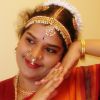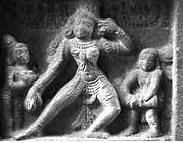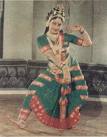
Nrityavidyalaya - Bharatanrityam Dance School

Home About me Performances My Guru Photo Gallery Videos Curriculum Bharatanatyam Contact Form News and Events
 |
Nrityavidyalaya - Bharatanrityam Dance School |
 |
Home About me Performances My Guru Photo Gallery Videos Curriculum Bharatanatyam Contact Form News and Events |
Bharatanatyam
Is a classical dance form originating from Tamil Nadu, a state in Southern India. This popular Tamil dance form called Bharatanatyam is a 20th century reconstruction of Sathir, the art of temple dancers. Sadir was performed by the devadasis in the temple during the variuos rituals and functions celebrated at the temple.Later this same dance form used to be performed to please the kings in the courts.Then the Tanjore quartet around 1683 gave the present repertoire of Bharatanatyam recital.Sometimes the word Bharatanatyam is also given a folk etymology as follows:Bha for Bhava or abhinaya and expression, Ra for raga or melody, and Ta for tala or rhythm. As in the folk etymology goes bharatanatyam is a presentation of bhava that is done in unison with music and rhthyms.
The very distinctive musical form and Expression (both facial and through the body) or "Abhinaya" along with excellence in Nrithya or Dance and Tala or Rhythm give Bharatanatyam its unique character. The music is traditional Carnatic music and is mostly Geetha or Vocal music. Usually the singer is accompanied by musicians playing on a variety of instruments like the Violin, Mridangam and so on. The conductor of the recital or the Nattuvanar plays a very important role by performing the Nattuvangam with the cymbals called "Talam". The nattuvanar who is very often the teacher also recites the sollukattus or rhythmic syllables which are interspersed between musical phrases.

